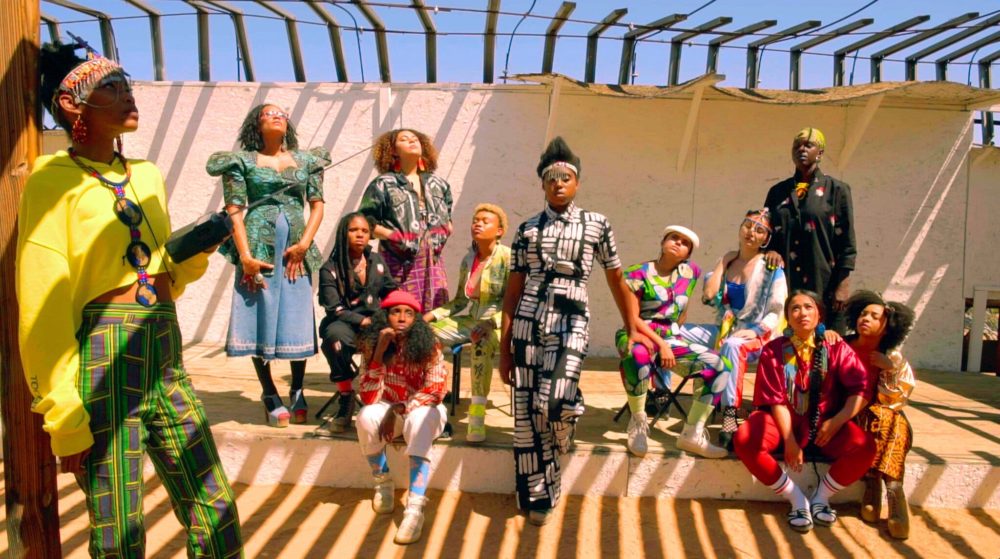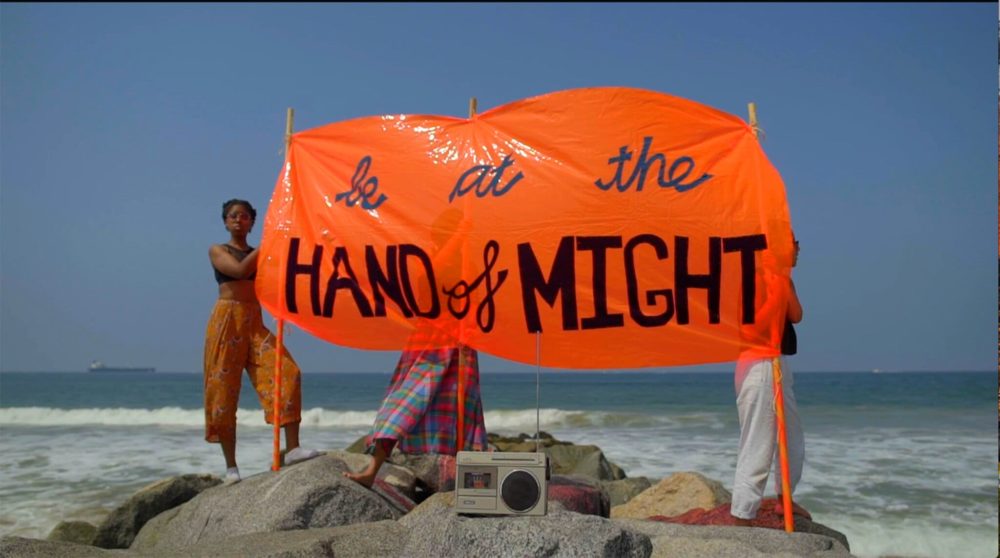
- Source: The New York Times
- Author: Siddhartha Mitter
- Date: September 3, 2020
- Format: PRINT AND DIGITAL
The Whitney Reopens With 3 Powerhouse Shows
When the museum closed in March, it was showing Agnes Pelton’s paintings and Mexico’s great muralists. Thankfully, these works are still up on the walls.

A still from “Sojourner” (2018), by Cauleen Smith. Courtesy of Cauleen Smith, Corbett vs. Dempsey, Chicago, and Kate Werble Gallery, New York
‘Cauleen Smith: Mutualities’
The sumptuous 22-minute film “Sojourner” anchors this presentation of recent work by the Los Angeles-based artist Cauleen Smith, on view through Jan. 31. Though made in 2018, it’s a perfect piece to provide solace, perspective and inspiration amid the fraught situation of America today.
The film opens in North Philadelphia, with grainy footage of horses on an empty lot and a rowhouse where John Coltrane lived in the 1950s. Soon it takes in a Shaker cemetery in upstate New York, a community arts center and an activist rally on Chicago’s South Side and multiple California spots — a beach, poppy fields, the Watts Towers, the ashram founded by Alice Coltrane as Swamini Turiyasangitananda.
The camera settles into an extended sequence filmed in intense desert light at the found-object sculpture garden built by the artist Noah Purifoy in Joshua Tree, Calif.There, a dozen women wearing exuberant Afro-Bohemian styles tune into astral signals on an old radio, clasp hands to a reading of the Combahee River Collective Statement and process, bearing banners, toward a final exalted tableau.

The 22-minute film is on view at the Whitney through Jan. 31. Courtesy of Cauleen Smith, Corbett vs. Dempsey, Chicago, and Kate Werble Gallery, New York
The film’s coherence owes to its underpinning theme: how visionary practice overflows the boundaries of art, spirituality and politics, and gathers all these together when they’re exercised with generosity. Narrations of texts by Rebecca Cox Jackson, a 19th-century Black Shaker eldress, and words and music by Alice Coltrane are crucial to the weave. But this cumulative tour de force belongs to Ms. Smith, an experimental filmmaker at the pinnacle of her craft who has brilliantly paced many elements into a resonant journey in which the trace of fellow seekers, past and present, ultimately leads to freedom.
The Whitney has installed “Sojourner” appropriately, with its own room and a large screen. Another Smith film, “Pilgrim,” which revisits the ashram and the Shaker site in a melancholy register, suffers from its placement in a corridor that leads to the terrace. Also on view are Ms. Smith’s drawings of book covers; in this series, “Firespitters,” she celebrates books by some of her favorite poets and others that they, in turn, have recommended. A big show developing Ms. Smith’s vision across mediums — film, installation, performance, textile — is desperately overdue in New York. But “Sojourner,” a masterpiece, is essential balm and ballast for now.

